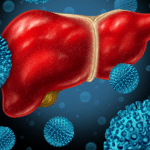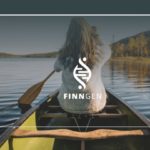
[Disclaimer: I am an employee of Bristol Myers Squibb. The views expressed here are my own.]
One of my favorite questions to ask is: “What captures your imagination?” At a recent family dinner, responses were varied but encouraging for the next generation: black swan events, comparative anatomy & human physiology, space exploration & intelligent life beyond our planet, and more. My response was programmable therapeutics, a topic which I have blogged about in the past.
In this blog I define programmable therapeutics and provide a few recent examples (severe combined immune deficiency and mRNA vaccines). As you will see, programmable therapeutics is more than pure imagination – we are seeing this new concept evolve before our very eyes.
What is the concept of programmable therapeutics?
While there are different definitions of the concept of programmable therapeutics (see a16z talk; programmable cells; synthetic biology; CRISPR base editing), my definition of programmable therapeutics relates to a platform with modular components that can shorten the time from new target to drug candidate and ultimately regulatory trials that can lead to an approved medicine.
For most drug development programs, the identification of a drug target represents the start of a long journey that is highly artisanal.…
Read full article...

[Disclaimer: I am an employee of Celgene. The views expressed here are my own.]
Human genetics offers the potential to identify drug targets and to inform decision-making on the journey to an approved drug. A recent study by Ference et al in the New England Journal of Medicine (NEJM) provides an example of human genetics in action. While most of the study focuses on Mendelian randomization to establish a relation among ACLY genetic variation, LDL cholesterol levels, and cardiovascular events, in this blog I focus on a topic highlighted in the companion NEJM editorial: human genetics to predict on-target adverse drug events (see NEJM editorial here).
First, what is the framework for the application of human genetics to predict on-target adverse drug events (ADEs)? Briefly, human genetics can predict on-target toxicity if the following criteria are met: (1) unambiguous association of genetic variant to a clinical phenotype that is a surrogate for drug efficacy and toxicity; (2) unambiguous relationship between disease-associated variant and implicated gene that is the target of the therapeutic intervention; (3) quantitative assessment of gene function and clinical phenotypes of efficacy and toxicity to estimate a “genotype-phenotype dose-response” relationship; and (4) confidence that the therapeutic intervention mimics the mechanism of action of the disease-associated variant.…
Read full article...

[Disclaimer: I am an employee of Celgene. The views reported here are my own.]
On a recent family vacation to Cumberland Island, a 9,800-acre barrier island off the coast of Georgia, I was mesmerized by the dense forest of live oak trees covered with Spanish moss. Upon first glance, the branches of these magnificent trees extend chaotically in all directions, and it is difficult to discern where the trees begin and end. But upon closer inspection, the root structure can be identified, moss disentangled, and the overall complexity unraveled.
These craggy oak trees serve as metaphor for our complex human biological ecosystem: a dense forest of molecules with gnarled branches of pathways meandering in all directions, without an obvious root structure of human disease. Extending the metaphor further, the oak trees make the point that I see as one of the most difficult aspect of drug discovery and development: understanding root cause of disease, and matching therapeutic modality and biological mechanism to prevent or cure devastating illness.
In this blog, I highlight two recent publications that underscore the importance of matching modality and mechanism. The first article, published in the New England Journal of Medicine, reported clinical data on 22 patients with beta-thalassemia treated with ex vivo gene therapy (here).…
Read full article...

[Disclaimer: I am an employee of Celgene. The views reported here are my own.]
Drug research and development (R&D) is a slow, arduous process. As readers of this blog know, it takes >10 years and upwards of $2.5 billion dollars to bring new therapies to patients in need. An aspiration of the biopharmaceutical ecosystem is to shorten cycle times and increase probability of success, thereby dramatically improving the efficiency of R&D.
One potential solution is to use human genetics to pick targets, understand molecular mechanism, select pharmacodynamics biomarkers, and identify patients most likely to respond to treatment (see Science Translational Medicine article here). While intuitively appealing and supported by retrospective analyses (here), it is not yet routinely implemented in most R&D organizations (although see Amgen blog here; Regeneron study below). Indeed, human genetics often represents an inconvenient path to a new therapeutic, as it takes substantial effort to understand the molecular mechanism responsible for genetic risk and many such targets are difficult to drug.
But what if…
…it were possible to go from gene variant to therapeutic hypothesis instantly via in silico analysis;
…it were possible to select an “off-the shelf” therapeutic molecule that recapitulates a human genetic mutation, and take this molecule into humans almost immediately, with limited pre-clinical testing;
…it were possible to select pharmacodynamics (PD) biomarkers that capture underlying human physiology, and to measure those PD biomarkers in a small, human proof-of-mechanism clinical trial;
…it were possible to model the magnitude of effect of a therapeutic intervention relative to existing standard-of-care, and thereby to estimate the commercial market of an as-yet-to-be-approved drug?…
Read full article...

A new genetics initiative was announced today: the creation of FinnGen (press release here). FinnGen’s goal is to generate sequence and GWAS data on up to 500,000 individuals with linked clinical data and consented for recall. There are many applications for such a resource, including drug discovery and development. In this blog, I want to first describe the application of PheWAS for drug discovery and development, and then introduce FinnGen as a new PheWAS resource (see FinnGen slide deck here).
[Disclaimer: I am an employee of Celgene. The views expressed here are my own.]
PheWAS
PheWAS turns GWAS on its head. While GWAS tests millions of genetic variants for association to a single trait, PheWAS does the opposite: tests hundreds (if not thousands) of traits for association with a single genetic variant. This approach is primarily relevant for those genetic variants with an unambiguous functional consequence – for example, a variant associated with disease risk or a variant that completely abrogates gene function. There are useful online resources (see here), as well as several nice recent reviews by Josh Denny and colleagues, which provide additional background on PheWAS (see here, here).
Work that originated from my academic lab represents the first example of PheWAS for drug discovery – in particular, how to use PheWAS to predict on-target adverse drug events (ADEs) and to select indications for clinical trials (see 2015 PLoS One publication here).…
Read full article...

A recent study in the New England Journal of Medicine provides genetic support for a pharmacologically validated target, BAFF, in the treatment of systemic lupus erythematosus. But can human genetics also be used to estimate the target dose and a therapeutic window?
As readers of plengegen.com know, I am constantly on the lookout for published studies that provide insight into the utility of human genetics for drug discovery and development. This past week there was a great post from Francis Collins on the role of the NIH in the discovery (in part via human genetics) and development of tofacitinib (see here), anakinra and potentially novel targets (e.g., STING) for inflammatory diseases (here). Nature Reviews Drug Discovery published a News & Analysis on PCSK9 as a “fertile testing ground for new drug modalities including long-acting RNA interference drugs, vaccines against self-antigens, CRISPR therapeutics and small molecules that control ribosomal activity” (here). New York City released information about a new public health initiative, The NYC Macroscope, which will use electronic health records (EHRs) to track conditions managed by primary care practices that are important to public health..and one day may be linked to genetic data for discovery research (that is me just speculating).…
Read full article...

As readers of my blog know, I am a strong supporter of a disciplined R&D model that focuses on: picking targets based on causal human biology (e.g., genetics); developing molecules that therapeutically recapitulate causal human biology; deploying pharmacodynamic biomarkers that also recapitulate causal human biology; and conducting small clinical proof-of-concept studies to quickly test therapeutic hypotheses (see Figure below). As such, I am constantly on the look-out for literature or news reports to support / refute this model. Each week, I cryptically tweet these reports, and occasionally – like this week – I have the time and energy to write-up the reports in a coherent framework.
Of course, this model is not so easy to follow in the real-world as has been pointed out nicely by Derek Lowe and others (see here). A nice blog this week by Keith Robison (Warp Drive Bio) highlights why drug R&D is so hard.
Here are the studies or news reports from this week that support this model.
(1) Picking targets based on causal human biology: I am a proponent of an “allelic series” model for target identification. Here are a couple of published reports that fit with this model.…
Read full article...

Like many, I waited with bated breath for results of the anti-PCSK9 (evolocumab) FOURIER cardiovascular outcome study last week. There have been many interesting commentaries written on the findings. A few of my favorites are listed here (Matthew Herper), here (David Grainger), here (Derek Lowe), and here (Larry Husten), amongst others, with summaries provided at the end of this blog. Most of these articles focused on clinical risk reduction vs. what was predicted for cardiovascular outcome, as well as whether payers will cover the cost of the drugs. These are incredibly important topics, and I won’t comment on them further here, other than to say that the debate is now about who should get the drug and how much it should cost.
In this blog, I want to emphasize key points that pertain to human genetics and drug discovery. And make no mistake: the anti-PCSK9 story and FOURIER clinical trial outcome is a triumph for genetics and drug discovery. This message seems to be getting muddled, however, given the current cost of evolocumab and the observation that cardiovascular risk reduction was less than expected, based on predictions from a 2005 study published by Cholesterol Treatment Trialists (CTT) (see Lancet study here).…
Read full article...

Yesterday I participated in the National Academy workshop, “Enabling Precision Medicine: The Role of Genetics in Clinical Drug Development” (link here). There were a number of great talks from leaders across academics, industry and government (agenda here).
I was struck, however, by a consistent theme: most think that “precision medicine” will improve delivery of approved therapies or those that are currently being developed, whether or not the therapies were developed originally with precision medicine explicitly in mind. Many assume that the observation that ~90% medicines are effective in only 30% to 50% is the result of biological differences in people across populations (see recent Forbes blog here). This hypothesis is very appealing, as there are many unique features to each of us.
An alternative explanation is that most medicines developed without precision medicine from the beginning only work in ~30% patients because the medicines don’t target the biological pathways that make each of us unique.
I believe the most likely application is in the discovery and development of new therapies. That is, I believe that the greatest impact will come when precision medicine strategies are incorporated into the very beginning of drug discovery, and will only rarely have an impact on therapies that were not developed with precision medicine in mind from the start.…
Read full article...

A new sickle cell anemia gene therapy study published in the New England Journal of Medicine (see here, here) gives hope to patients and the concept of rapidly programmable therapeutics based on causal human biology. But how close are we really?
It takes approximately 5-7 years to advance from a therapeutic hypothesis to an early stage clinical trial, and an additional 4-7 years of late stage clinical studies to advance to regulatory approval. This is simply too long, too inefficient and too expensive.
But how can timelines be shortened?
In the current regulatory environment, it is difficult to compress late stage development timelines. This leaves the time between target selection (or “discovery”) and early clinical trials (ideally clinical proof-of-concept, or “PoC”) as an important time to gain efficiencies. Further, discovery to PoC is an important juncture for minimizing failure rates in late development and delivering value to patients in the real world (see here).
Here, I argue that rapidly programmable therapeutics based a molecular understanding of the causal disease process is key to compressing the discovery to PoC timeline.
Imagine a world where the molecular basis of disease is completely understood. For common diseases, germline genetics contributes approximately two-thirds of risk; for rare diseases, germline genetics contributes nearly 100% of risk.…
Read full article...

It has been a good week for human genetics, with high-profile studies published in Science (here) and NEJM (here, here, here), and a summit at the White House on Precision Medicine. Here, I summarize the published studies and put them in context for drug discovery. But first, I want to briefly detour into a story about the Wright Brothers.
[Disclaimer: I am a Merck/MSD employee. The opinions I am expressing are my own and do not necessarily represent the position of my employer.]
In 1900, Wilbur and Orville Wright first began experiments with their flying machine. They defined three problems for manned flight: power, wing structure and control. As described beautifully in David McCullough’s book (review here), the brothers focused on the latter, control, which when sufficiently solved led to the first manned flight in 1903. Within ten years of solving the “flying problem”, aviation technology progressed to the point that manned flights were routine.
By analogy, I would argue that there are three key challenges for drug discovery: targets, biomarkers and clinical proof-of-concept studies. The key problem to solve is target selection. Today, we do not know enough about causal human biology to select targets, and as a consequence we have a crisis in cost (drugs are too expensive to develop because of failures at the most costly stage, late development) and innovation (for those drugs that work, there is insufficient differentiation from standard-of-care treatments to change health care outcomes).…
Read full article...

Today was the second coldest day of my life. When I woke up in Ludlow, Vermont, it was -20 degrees Fahrenheit; with wind chill it was -45° F. As the kids played downstairs, I caught up on my reading comforted by a raging log fire.
The topic de jour: non-genetic examples of causal human biology for drug discovery. Here, the experiment of nature was the formation of autoantibodies against a target and pathway implicated in acquired thrombotic thrombocytopenic purpura (TTP), a life-threatening disorder.
The study that caught my interest, “Caplacizumab for Acquired Thrombotic Thrombocytopenic Purpura”, was published last week in the New England Journal of Medicine. I won’t say much about the NEJM article itself, but I will briefly discuss the background leading up to the clinical trial. The key point: autoantibodies against ADAMTS13 pinpointed the target and pathway as causal in the ideal model organism, humans.
The story starts in 1976, when whole blood exchange transfusion resulted in clinical benefit in 8 of 14 patients with TTP. The following year, it was determined that the plasma fraction of the blood was the source of clinical benefit. It took approximately 20 years, however, to identify the deficient plasma factor as ADAMTS13, with deficiency caused by IgG autoantibodies that inhibit the enzyme.…
Read full article...

I say article of the week, but I have been lazy this summer (or maybe just consumed by other things). My last “article of the week” was in May and my last Plengegen blog post was over a month ago!
By now everyone knows the PCSK9 story. Human genetics identified the target; functional work in mouse and human cells led to a mechanistic understanding of PCSK9’s role in LDL receptor recycling; therapeutic modulation was shown to lower LDL cholesterol in clinical trials; and the FDA approved drugs based on LDL lowering, with outcome trials underway to demonstrate (presumably) cardiovascular benefit. What the story highlights is that a mechanistic understanding of causal pathways in human disease is key to the success of translating targets into therapies. Further, the PCSK9 story underscores the importance of a simple biomarker (LDL cholesterol) to measure a complex causal pathway in a clinical trial.
A recent study in the New England Journal of Medicine (NEJM) provides insight into a putative causal pathway in obesity, and thus a potentially a new mechanism for therapeutic modulation. The accompanying Editorial also provides a nice perspective.
[Disclaimer: I am a Merck/MSD employee. The opinions I am expressing are my own and do not necessarily represent the position of my employer.…
Read full article...














